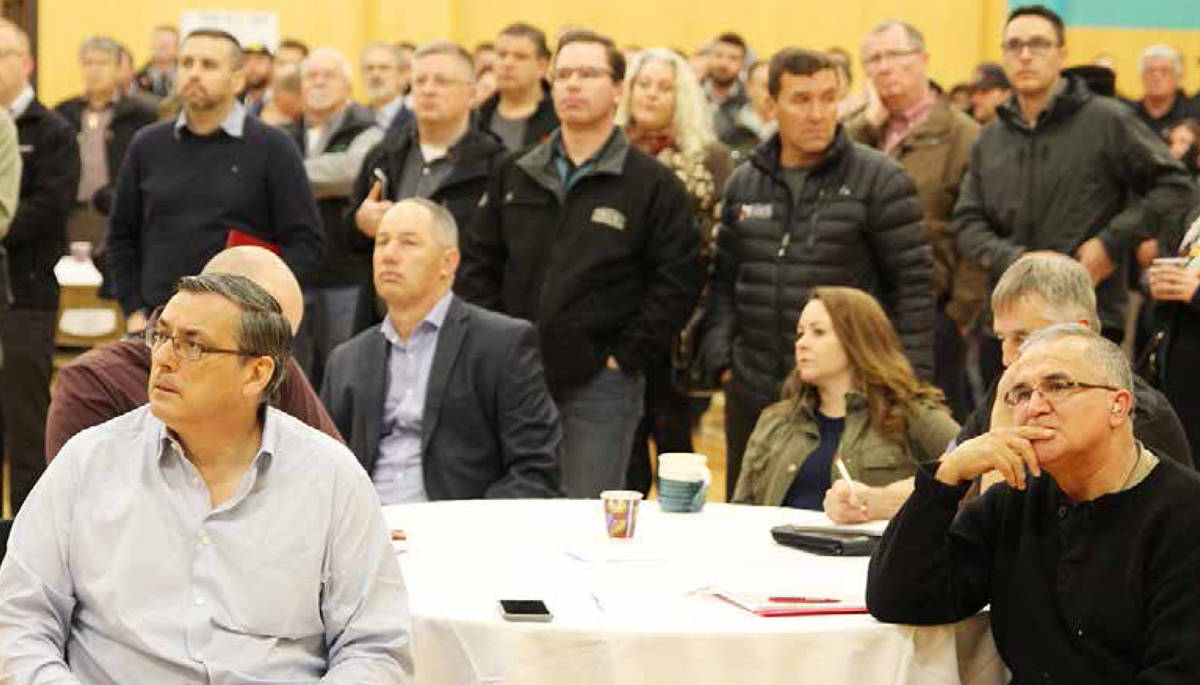District of Kitimat residents received a first-hand look at LNG Canada’s proposed project timelines for the construction of the plant at two open houses held on Thursday last week.
Representatives from LNG Canada’s Engineering, Procurement and Construction (EPC) contractor held two open houses, one in the morning for prospective contractors and another for residents in the afternoon.
The EPC was awarded to JFJV, a joint venture between Japanese engineering company JGC Corporation (JGC) and engineering and construction firm Fluor.
Speaking at a packed Riverlodge Rec Centre gymnasium, Fluor senior vice president and project director Phil Clark said there will be lots of opportunities for contractors going forward.
“There is construction already ongoing to prepare the job site. In reality the amount of work that we have going over the next two years is limited,” said Clark.
He said site clearance would be completed by the end of 2018, with cut and fill on the site starting in the first quarter of 2019 and piling starting in the fourth quarter of 2019.
The first completed module fabricated in Asia for use in the construction of the plant is only expected to arrive in the second quarter of 2021, with the first of four ‘trains’ ready for operation in the fourth quarter of 2023.
“Our priority is to get the first train ready for startup by Q4 2023 - that’s our timeline. It’s a five-year program from getting full Notice to Proceed next week for the first train, followed by the second train,” said Clark. “There is the potential also for two more trains, this being a four-train plant.”
Clark spoke briefly about the number of workers that would be in Kitimat over the length of the project, the number increasing steadily into 2020, followed by a dip in 2021 and a steep increase in 2022/2023, which will see the bulk of the workers in Kitimat, tailing off in 2024 as work is completed on the first trains.
“The dip in 2021 is fairly normal on a project like this as we finish site preparations and foundations before mechanical work starts to ramp up.”
He said while there are only 4,500 camp beds, there would be a total of 7,500 workers involved in the project over the length of the project.
“That’s because we have local people and people on rotation, working every day of the week, every day of the year, apart from holidays,” said Clark.

